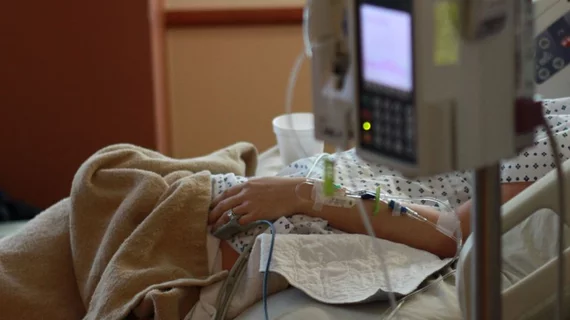More than 80% of stable patients with ST-segment elevation myocardial infarction (STEMI) are treated in the intensive care unit despite only 16% of them experiencing complications that require an ICU stay, according to a U.S. registry analysis published in JACC: Cardiovascular Interventions.
The gap highlights the need to develop risk scores to determine which patients are most likely to require ICU care and also points to a cost-cutting opportunity if more of these unnecessary ICU stays could be avoided, wrote the authors of an accompanying editorial.
“The high ICU utilization pattern, despite declining complications following PPCI (primary percutaneous coronary intervention), calls for a new approach,” wrote Suartcha Prueksaritanond, MD, and Ahmed Abdel-Latif, MD, PhD. “This is particularly important because the overall health care cost continues to grow and calls for optimal resource utilization to prevail.”
The study included 19,507 STEMI patients from the Chest Pain-MI Registry who were at least 65 years old, underwent uncomplicated primary PCI and were hemodynamically stable upon hospital admission. Patients who had procedural complications, cardiac arrest or were in shock were not included, as those patients should be treated in the ICU.
Despite restricting the study population in this manner, 82.3% of stable STEMI patients were treated in ICUs with a median ICU stay of one day. However, only 16.2% of patients developed a complication which necessitated an ICU stay. The rates of those complications—patients could have more than one—were as follows: 3.7% died, 3.7% had cardiac arrest, 3.7% experienced shock, 0.9% suffered a stroke, 4.1% had high-grade atrioventricular block requiring treatment and 5.7% experienced respiratory failure.
Study authors led by Jay S. Shavadia, MD, found that time to treatment was an important predictor for developing a complication. Patients who were treated within an hour of first being seen by medical personnel had a complication rate of 13.4%, but that proportion grew to 15.7% for those treated between 60 and 90 minutes later and to 18.7% for those treated more than 90 minutes after first medical contact.
"Although 16 percent is not a small number of STEMI patients who should be in the ICU, we found the majority of patients don't need to be there," Shavadia, with Duke Clinical Research Institute in Durham, North Carolina, said in a press release.
Prueksaritanond and Abdel-Latif said in their editorial more work is necessary to determine which variables are most important in predicting outcomes for a more generalizable group of STEMI patients.
“Studies challenging the outdated system-based practice with a more comprehensive, yet simple-to-follow, algorithm for risk stratification of STEMI patients are imperative,” they wrote. “Until then, the ICU admission decision for STEMI patients will continue to be based on individual judgment and traditional protocols rather than robust and evidence-based risk prediction models.”

